In this article, you will learn the different types of wood joints and their working. Their Advantages and Applications all are explained with pictures.
Also, you can download the PDF file at the end of this article.
Wood Joints
Wood joints are joints made of pieces of wood with the help of nails, fasteners, pegs, or glue. These joints are used to join wood, engineered lumber, or synthetic substitutes (such as laminate) to produce more complex items.
Some wood joinery uses mechanical fasteners, bindings, or adhesives as the fixing medium, while others use only wooden elements (such as plain mortise and tenon fittings). Wooden joints are solid and attractive at the same time.
Depending on the materials involved and the purpose of the joint, wooden joints exhibit different characteristics, such as strength, flexibility, toughness, and appearance. Therefore, different types of wood joinery methods are used to meet different needs.
Due to the many types of wood joinery available, a woodworker can choose from a wide range of joints depending on the project at hand. To understand these different wood joints, I bring you a complete guide on the types of wood joints and their uses. Let’s get started.
Read Also: Different Types of Axes & Their Applications [Explained]
Types of Wood Joints
Following are the various types of wood joints:
- Butt joint
- Mitered butt joint
- Lap joint
- Half-lap joint
- Bridle joint
- Dowel joint
- Cross dowel joint
- Pocket joint
- Biscuit joint
- Groove joint
- Tongue and groove joint
- Mortise and tenon joint
- Box joint
- Dovetail joint
- Half-blind dovetail joint
- Dado joint
- Scarf joint
- Rabbet joint
- Sliding dovetail joint
#1 Butt Joint
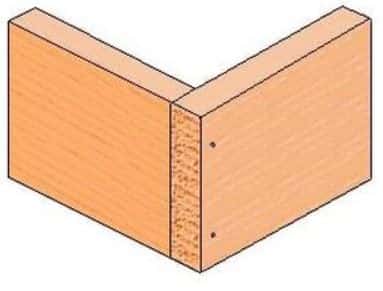
A butt joint is a basic and traditional wood joinery where one piece bumps into another end grain at 90 degrees. In this wood joint, the two pieces are not shaped or carved to lock into each other but are instead fastened using bolts and screws to hold them together.
It is easy to conduct as it only involves cutting the material into appropriate lengths and joining them together. However, it is also the weakest because unless reinforcement of some sort is used, it relies on glue or welding alone to hold it together. A butt joint is mainly used to fix baseboards and wall framing on construction sites.
#2 Mitered Butt Joint
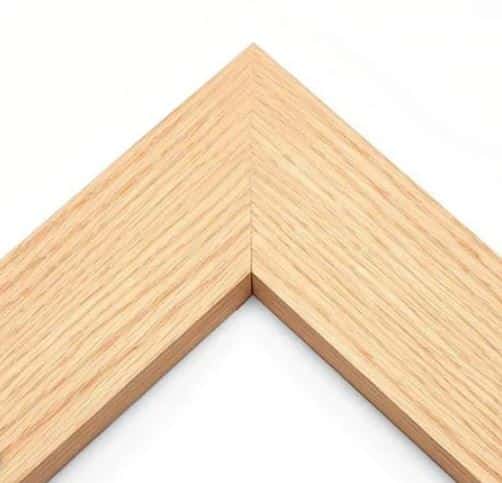
A mitered butt joint is similar to a butt joint, except the two boards are joined at an angle rather than a square (forming a corner). As a result, the mitered butt joint won’t show any end grain, making it more aesthetically pleasing.
This is the simplest wood joint that requires any cutting to be joined together. But the cutting angle of the wood should be exactly 45°. Nevertheless, the mitered butt joint is not as strong butt joint. These types of wood joints are mainly used for making frames, furniture, doors, windows, etc.
#3 Lap Joint
Also known as an overlap joint, this is the type of wood joint in which the wood piece overlaps. These are popular types of wood joints and maybe a full lap or a half lap. A full-lap joint requires no material to be removed from either of the joined pieces, but a half-lap joint requires material to be removed from both pieces.
Typically in half-lap joints, the wood piece is of equal thickness, and half the thickness of each is removed. Lap joints can be made on two long grains where the faces are joined with glue. This joint is considered as the strongest joint and also has the ability to resist shear forces.
Read Also: What is Hack Saw? Its Parts, Types, Blades, Methods, and More
#4 Half-lap Joint
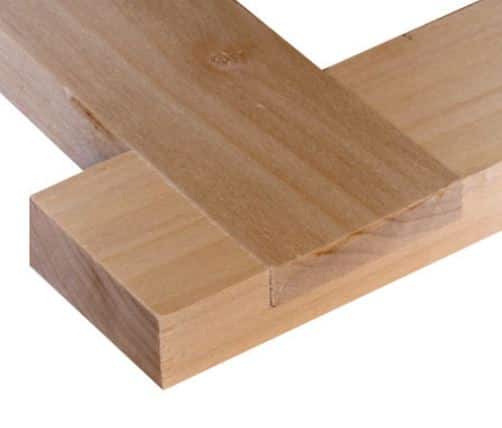
As mentioned earlier, a half-lap joint involves removing half of each board being joined so that they fit together. This joint only needs two cuts and a minor cleanup with a chisel. The half-lap joint has significant glue surfaces and a shoulder to help square the frame.
Although this type of wood joint can weaken the strength of two adjacent boards, it is also stronger than butt joints. This is an easy-to-handle wood joint that provides decoration and structure. On long runs and at 90-degree intersections, these joints are commonly used in framing lumber construction.
#5 Bridle Joint
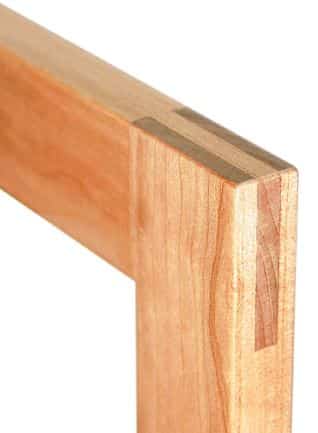
In woodworking, bridle joints are similar to mortise and tenon joints because a tenon is cut to the end of one wood piece, and a mortise is cut on the other to accept it. In T-bridle joints, the ends of one piece are joined to the middle of the other, most commonly on corners.
The T-bridle joint is solid and suitable for joining two pieces together. Because the bridle joint has a large glue surface area and is relatively simple to execute, word workers tend to use it on large pieces. These are often used in large joining applications, such as workbenches with massive cross members or the manufacture of barn doors.
#6 Dowel Joint
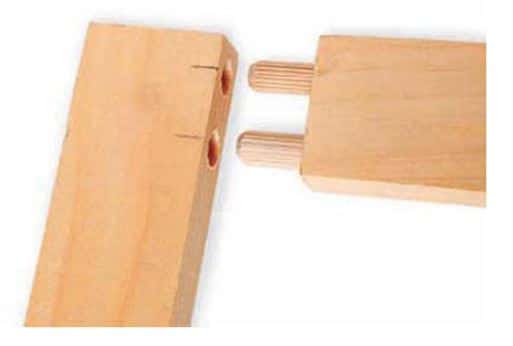
Dowel joints are very attractive in appearance as well as they are stronger than other joints. It is helpful to join two pieces of wood by drilling dowel holes in each piece and using wooden pegs (dowels) to join them.
These dowels act like mechanical fasteners, bridging between the two boards and holding things together. Using this wood joint increases the stability of weak wood joints such as the butt joint. These types of wood joints are mainly used in furniture making. Apart from this, it is used in carpentry workshops to join two or more pieces of wood.
Read Also: 32 Types of Hammers and Their Uses [Pictures]
#7 Cross-Dowel Joint
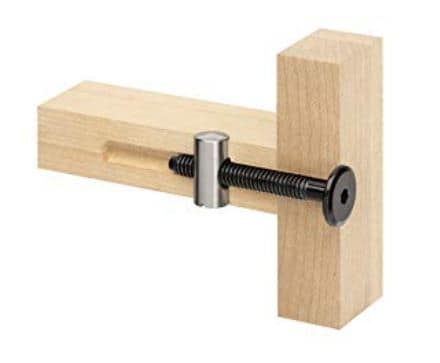
These are very similar to dowel-type wood joints. The only difference is a threaded metal dowel is inserted into the drilled slot. In this joint, a screw is inserted and tightened to create a pull effect and is commonly used in factory-made furniture.
Cross-dowel joints make strong, secure, right-angle joints capable of withstanding high torque. If you take this joint apart and put it back together several times, it may not lose its strength or wear out from friction.
#8 Pocket Joint
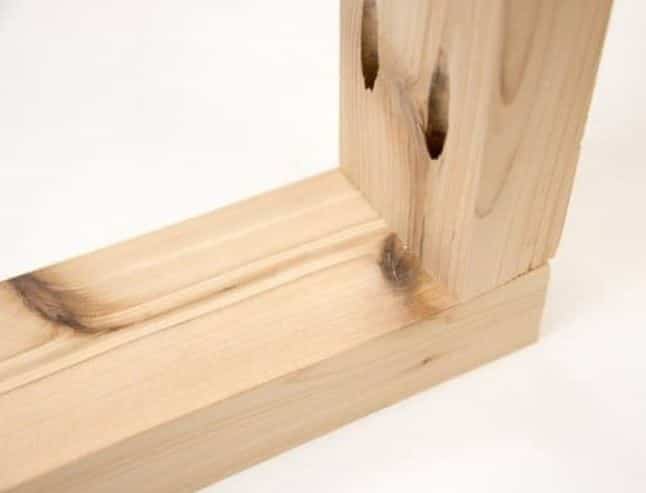
This joint is more familiar even to novice woodworkers. With pocket joints, holes are drilled at an angle, usually 15 degrees, into one workpiece and then attached to a second piece by self-tapping screws. This drilling must be precise, so it is usually done using a commercial jig.
It is touted as the fastest and easiest way to join two pieces without clamping them. It is an excellent choice for cabinet face frames and similar applications where a lot of strength is not required. In addition, it can also be used for various configurations and functions, from picture frames to furniture.
#9 Biscuit Joint
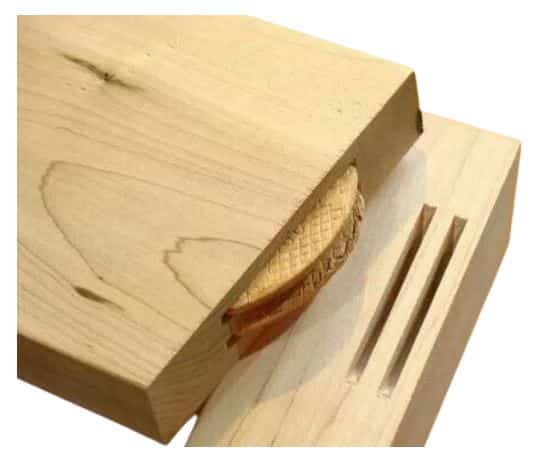
This is another method of joining two pieces of wood where you don’t need nails or screw holes. It is a method of joinery in which compressed wood chips (the biscuit) are inserted between two pieces of wood of the same length.
It is a modern woodworking joint used specifically for making table tops, relying on glue and swelling of beechwood biscuit to hold the boards in place. These joints aren’t as strong as other joints, but they’re perfect if you’re building a series of cabinets and bookshelves.
Read Also: Different Types of Saws Used in Workshop (How To Use Them)
#10 Groove Joint
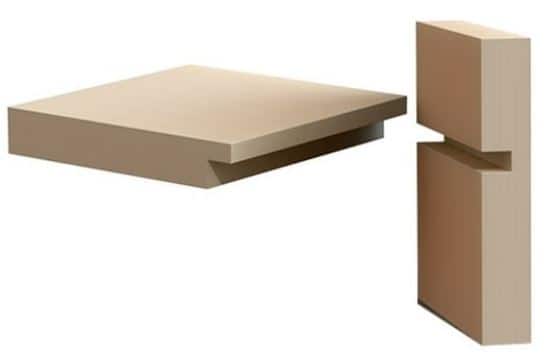
In this wood joint, a groove is a slot or gap cut into a wooden piece that runs parallel to the grain. The groove is thus different from the dado, which runs perpendicular to the grain. These are useful in cabinetry and other woodworking. In general, groove joints are used in panel construction and drawer bottoms.
#11 Tongue and Groove Joint
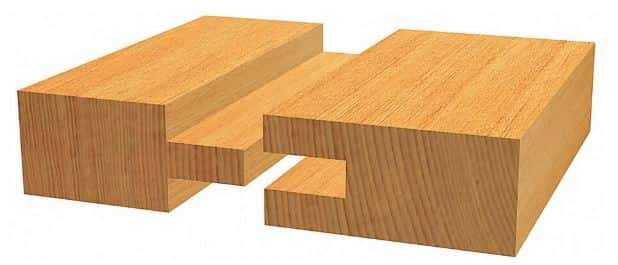
It is also a wood joint that facilitates the installation process of wood boards and materials. This is a typical wood joint made with two or more pieces of wood joined edge to edge. It is similar to a mortise-and-tenon joint in that a tongue protrudes from the center of one piece to fit into a matching pocket, groove in the other.
This joint is stronger and provides more adjacent surface area, which is especially useful if you are going to glue the joint. Tongue and groove joints are durable joints that can be used as floorboards, lining boards, wood paneling, and table tops.
#12 Mortise and Tenon Joint
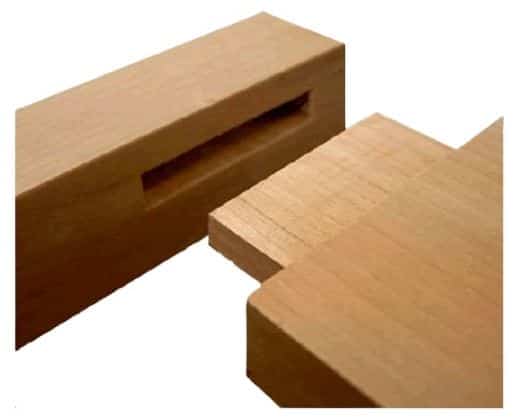
Mortise in this joint refers to a pocket or groove cut in wood, and tenon describes a positive part of another wood piece that is inserted into the mortise. The mortise and tenon joint also gives the wood an attractive look.
This classic wood joint has been used since the earliest times of woodworking and is still one of the strongest and most elegant methods of joining wood. One drawback of this joint is its difficulty making it because it requires precise measuring and cutting. This joint is commonly used to make wood components such as beams, roof frames, structures, and brackets.
Read Also: List of 20 Different Types of Nuts and Bolts [Their Functions]
#13 Box Joint
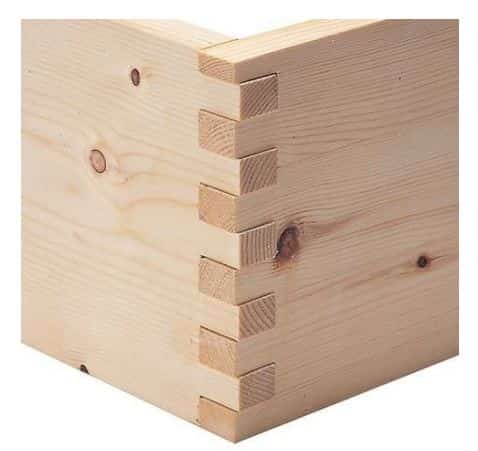
Woodworkers make box joints by cutting complementary, interlocking profiles in two pieces of wood, which are then glued together at right angles. The glued box joint has a high gluing surface area resulting in a strong bond.
Box joints have parallel cuts and open visible joints. An alternative to the dovetail joint, they are used for box corners or box-like constructions. One advantage of using a box joint is that it is easy to make and can be easily mass-produced. This type of wood joint is suitable for joining wide slats, boards, and solid wood panels.
#14 Dovetail Joint
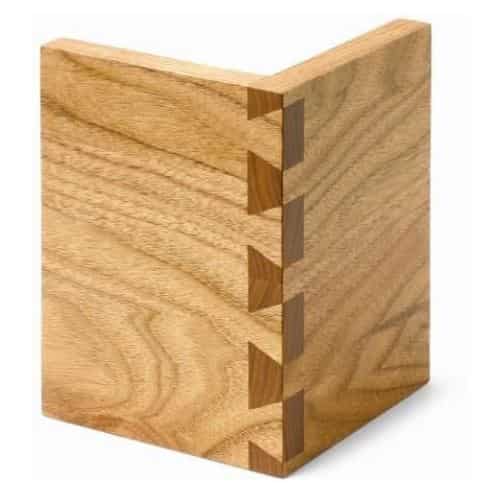
The dovetail joint is formed by one or more tapered projections on one piece that engage with corresponding grooves in the other. Dovetail joints are beautiful to look at and strong, plus they are the most difficult joints to execute.
It is made by hand, using a combination of saw and chisel work, or cut with an array of router templates available, ensuring proper alignment of the pin and tail. These joints are commonly used in joinery woodworking, including furniture, cabinets, log building, and traditional wood framing. Dovetail joints generally give high strength and resistance.
#15 Half-blind Dovetail Joint
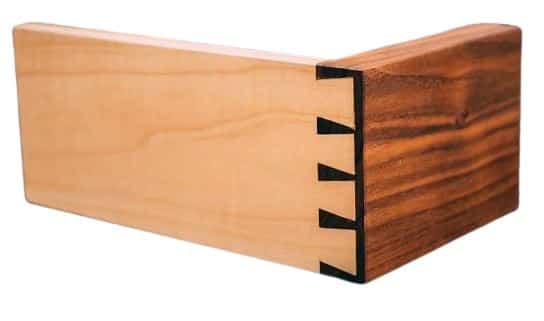
It is almost identical to a dovetail joint, but the only difference is that the joint edges are hidden from the front end. In this wood joint, the tails are placed in sockets at the ends of the board to be the front of the item so that their ends cannot be noticed.
A drawer front can be a perfect example to illustrate this, where you want to avoid seeing the end through the dovetail on the face of the drawer. In these cases, the best option is to install a half-blind dovetail.
Read Also: Types of Nail Guns and Their Uses [When and How to Use]
#16 Dado Joint
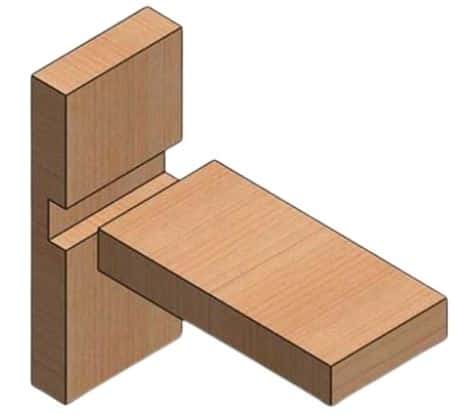
A dado refers to a slot, or trench, cut into the surface of a piece of material, usually wood. Simply put, it’s a square grooved slot on one board that another board will fit into. It is the strongest joint in wood and is composed of a three-sided channel cut in the grain of a workpiece.
These are cut with a router, or a dado blade in a table saw. Dados are often used to attach brackets to cabinet bodies. The dado joint is similar to the tongue-and-groove joint, and it is a commonly used woodworking joint for joining plywood, such as in cabinetry construction.
#17 Scarf Joint
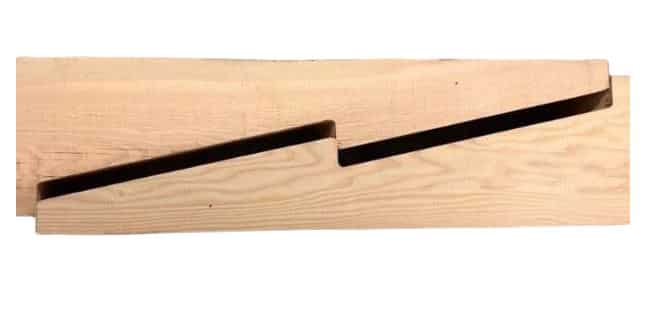
Also known as a scarf joint, it is a method of joining two members end-to-end in woodworking. A scarf joint is a perfect option if you’ve got long pieces of lumber available. It forms a 45-degree angle with the elevation at the end of a board where two pieces meet, resulting in an invisible transition between parts.
This joint is often preferred over other joints in joinery because it yields a barely visible glue line, unlike the butt joint and the splice joint. These types of wood joints are mainly used in boat and canoe making.
#18 Rabbet Joint
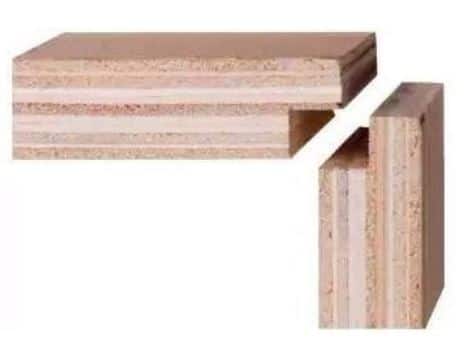
Also known as a rebate joint, this is a groove or dado on the edge of a lumber piece that forms a lip. The lip can then be inserted into the groove snugly. Cabinets and similar assemblies can be strengthened by using rabbets to attach the back to the sides of the box.
These joints are not as strong and are often supported with screws, nails, or dowels. The joint is fairly easy to make, and the appearance is even more effective than a butt joint, making it a better joint for carpentry or cabinet making. Rebate joints are useful for furniture construction that uses boards, such as small dressers.
Read Also: 24 Essential Types of Screwdrivers with Their Uses
#19 Sliding Dovetail Joint
Using a sliding dovetail, two boards can be joined at right angles in the field of one board rather than at the end. This design allows the interlocking strength of a dovetail. This type of wood joint is assembled by sliding the tail into the socket.
Sliding dovetail joints are versatile joints that have many applications. It is mechanically strong, provides a good amount of glue surface, is fairly easy to make, and is attractive when assembled. To make this wood joint, all you need is a router, router table, and a dovetail bit.
Closing It Up
I hope I have covered everything about the “Types of wood joints.” If I missed something, or if you have any doubts, let me know in the comments. If you liked this article, please share it with your friends.
Want free PDFs direct to your inbox? Then subscribe to our newsletter.
Download PDF of this article:
You might like to read more in our blog:
Awesome Content Boss
Thanks for your feedback.